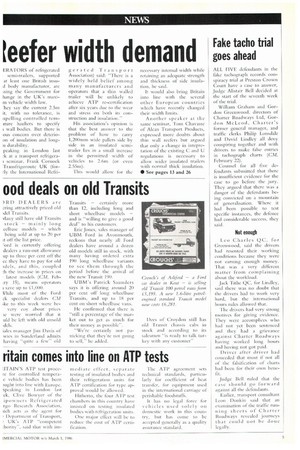leefer width demand
Page 5

If you've noticed an error in this article please click here to report it so we can fix it.
ERATORS of refrigerated semi-trailers, supported at least One British insu d body manufacturer, are ;sing the Government for Flange in the UK's maxi m vehicle width law.
'hey say the current 2.5ni it, with no tolerance, is ripelling controlled ternImre hauliers to specify wall bodies. But there is ous concern over deterioon of insulation and long n durability.
peaking in London last :k at a transport refrigerai seminar, Frank Comock Transfrigoroute UK (forrly the International Refri gerated Transport Association) said: "There is a widely held belief among many manufacturers and operators that a thin walled trailer will be unlikely to achieve ATP re-certification after six years due to the wear and stress on both its construction and insulation.'
His association's opinion is that the best answer to the problem of how to carry 1,200mm wide pallets side by side in an insulated semitrailer lies in a small increase in the permitted width of vehicles to 2.6m (or even 2.55m).
This would allow for the necessary internal width while retaining an adequate strength and thickness of side insulation, he said.
It would also bring Britain into line with the several other European countries which have recently changed their width limits.
Another speaker at the same seminar, Torn Chavasse of Alcan Transport Products, expressed more doubts about thin wall reefers but argued that only a change in intepretation of the existing C and LI regulations is necessary to allow wider insulated trailers with normal thick insulation.
• See pages 13 and 26




























































